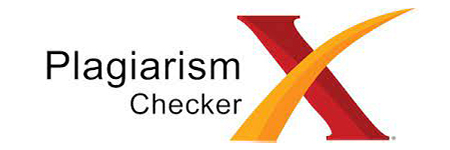Improving Reading Ability Using Cooperative Integrated Reading and Composition (CIRC) Learning Method in Class XI Students of SMAN 1 Gunungsari
DOI:
https://doi.org/10.70716/jess.v1i2.103Keywords:
Cooperative Integrated Reading and Composition (CIRC), Reading Ability, Secondary Education, Literacy ImprovementAbstract
This study investigates the effectiveness of the Cooperative Integrated Reading and Composition (CIRC) learning method in enhancing the reading ability of Class XI students at SMAN 1 Gunungsari. The research was conducted as a classroom action study, employing a cyclical process of planning, action, observation, and reflection. Data were collected through reading performance assessments, student questionnaires, and observational field notes. The findings reveal a significant improvement in students' reading comprehension, vocabulary acquisition, and critical analysis skills after implementing the CIRC method. Additionally, the collaborative nature of CIRC fostered greater student engagement and active participation in learning activities. The study concludes that the CIRC learning method is an effective pedagogical approach for improving reading skills in secondary education and recommends its broader application to enhance literacy outcomes. Further research is suggested to explore the method’s adaptability across diverse learning contexts and student demographics.
Downloads
References
Alghamdi, A. K. H. (2018). The impact of cooperative learning on developing students’ reading comprehension skills in EFL classrooms. English Language Teaching, 11(5), 87–98. https://doi.org/10.5539/elt.v11n5p87
Arends, R. I. (2012). Learning to teach (9th ed.). McGraw-Hill.
Aunurrahman, A., Hidayat, R., & Hafid, H. (2019). The implementation of cooperative integrated reading and composition (CIRC) in improving students’ reading comprehension. International Journal of Instruction, 12(2), 311–326. https://doi.org/10.29333/iji.2019.12220a
Cohen, E. G. (1994). Restructuring the classroom: Conditions for productive small groups. Review of Educational Research, 64(1), 1–35. https://doi.org/10.3102/00346543064001001
Eggen, P., & Kauchak, D. (2019). Educational psychology: Windows on classrooms (10th ed.). Pearson.
Gillies, R. M. (2007). Cooperative learning: Integrating theory and practice. SAGE Publications.
Graham, S., & Perin, D. (2007). Writing next: Effective strategies to improve writing of adolescents in middle and high schools. A report to Carnegie Corporation of New York. Alliance for Excellent Education.
Guthrie, J. T., & Wigfield, A. (2000). Engagement and motivation in reading. Handbook of Reading Research, 3, 403–422.
Hattie, J. (2009). Visible learning: A synthesis of over 800 meta-analyses relating to achievement. Routledge.
Huda, M. (2017). Cooperative learning: Theory, research, and practice. International Journal of Instruction, 10(2), 195–210. https://doi.org/10.12973/iji.2017.10213a
Jacobs, G. M., Power, M. A., & Loh, W. I. (2002). The teacher’s sourcebook for cooperative learning: Practical techniques, basic principles, and frequently asked questions. Corwin Press.
Johnson, D. W., & Johnson, R. T. (2009). An educational psychology success story: Social interdependence theory and cooperative learning. Educational Researcher, 38(5), 365-379.
Johnson, D. W., Johnson, R. T., & Holubec, E. J. (2014). Cooperative learning in 21st century. Anales de Psicología, 30(3), 841–851. https://doi.org/10.6018/analesps.30.3.201241
Kagan, S. (1994). Cooperative learning. San Clemente, CA: Kagan Publishing.
Klingner, J. K., & Vaughn, S. (1996). Reciprocal teaching of reading comprehension strategies for students with learning disabilities who use English as a second language. The Elementary School Journal, 96(3), 275–293. https://doi.org/10.1086/461828
Li, M. P., & Lam, B. H. (2013). Cooperative learning. The Hong Kong Institute of Education.
Liang, T. (2002). Implementing cooperative learning in EFL teaching: Process and effects. English Teaching & Learning, 26(2), 35–62.
Marzano, R. J., Pickering, D. J., & Pollock, J. E. (2001). Classroom instruction that works: Research-based strategies for increasing student achievement. ASCD.
McMaster, K. L., Fuchs, D., & Fuchs, L. S. (2006). Research on peer-assisted learning strategies: The promise and limitations of peer-mediated instruction. Reading & Writing Quarterly, 22(1), 5–25. https://doi.org/10.1080/10573560500203491
McTighe, J., & Wiggins, G. (2005). Understanding by design (Expanded 2nd ed.). ASCD.
Nurlaili, N., & Zulfah, Z. (2020). The effect of cooperative integrated reading and composition (CIRC) on students’ reading comprehension. English Review: Journal of English Education, 8(2), 237–244. https://doi.org/10.25134/erjee.v8i2.2645
O’Donnell, A. M. (2006). The role of peers and group learning. In P. A. Alexander & P. H. Winne (Eds.), Handbook of educational psychology (2nd ed., pp. 781–802). Lawrence Erlbaum Associates.
Panitz, T. (1999). The motivational benefits of cooperative learning. New Directions for Teaching and Learning, 1999(78), 59–67. https://doi.org/10.1002/tl.7806
Pressley, M., & McCormick, C. B. (1995). Advanced educational psychology for educators, researchers, and policymakers. HarperCollins College Publishers.
Roseth, C. J., Johnson, D. W., & Johnson, R. T. (2008). Promoting early adolescents’ achievement and peer relationships: The effects of cooperative, competitive, and individualistic goal structures. Psychological Bulletin, 134(2), 223-246.
Sharan, S. (1994). Handbook of cooperative learning methods. Greenwood Press.
Slavin, R. E. (1995). Cooperative learning: Theory, research, and practice. Allyn and Bacon.
Slavin, R. E. (2015). Cooperative learning in elementary schools. Education 3-13, 43(1), 5–14. https://doi.org/10.1080/03004279.2015.963370
Snow, C. E. (2002). Reading for understanding: Toward an R&D program in reading comprehension. Rand Corporation.
Stahl, R. J. (1994). Cooperative learning in social studies: A handbook for teachers. National Council for the Social Studies.
Stevens, R. J., & Slavin, R. E. (1995). The cooperative elementary school: Effects on students’ achievement, attitudes, and social relations. American Educational Research Journal, 32(2), 321–351. https://doi.org/10.3102/00028312032002321
Stevens, R. J., Madden, N. A., Slavin, R. E., & Farnish, A. M. (1987). Cooperative integrated reading and composition: Two field experiments. Reading Research Quarterly, 22(4), 433–454. https://doi.org/10.2307/747701
Susanto, A., & Nuryanto, A. (2019). The implementation of classroom action research to improve students’ reading comprehension through cooperative learning model. Journal of Education Research and Evaluation, 3(2), 80–89. https://doi.org/10.23887/jere.v3i2.17650
Tsai, C. C. (2013). Implementing cooperative learning in English reading classes in junior high schools. Journal of Language Teaching and Research, 4(1), 134–141. https://doi.org/10.4304/jltr.4.1.134-141
Vaughan, W. (2002). Effects of cooperative learning on achievement and attitude among students of color. The Journal of Educational Research, 95(6), 359–364. https://doi.org/10.1080/00220670209596610
Vygotsky, L. S. (1978). Mind in society: The development of higher psychological processes. Harvard University Press.
Zoghi, M., Mustapha, R., & Maasum, T. N. R. (2010). Collaborative strategic reading with university EFL learners. Journal of College Reading and Learning, 41(1), 67–94. https://doi.org/10.1080/10790195.2010.10850330
Downloads
Published
How to Cite
Issue
Section
License
Copyright (c) 2025 Muhammad Saofa, Iqbal Ramadahan

This work is licensed under a Creative Commons Attribution-ShareAlike 4.0 International License.











